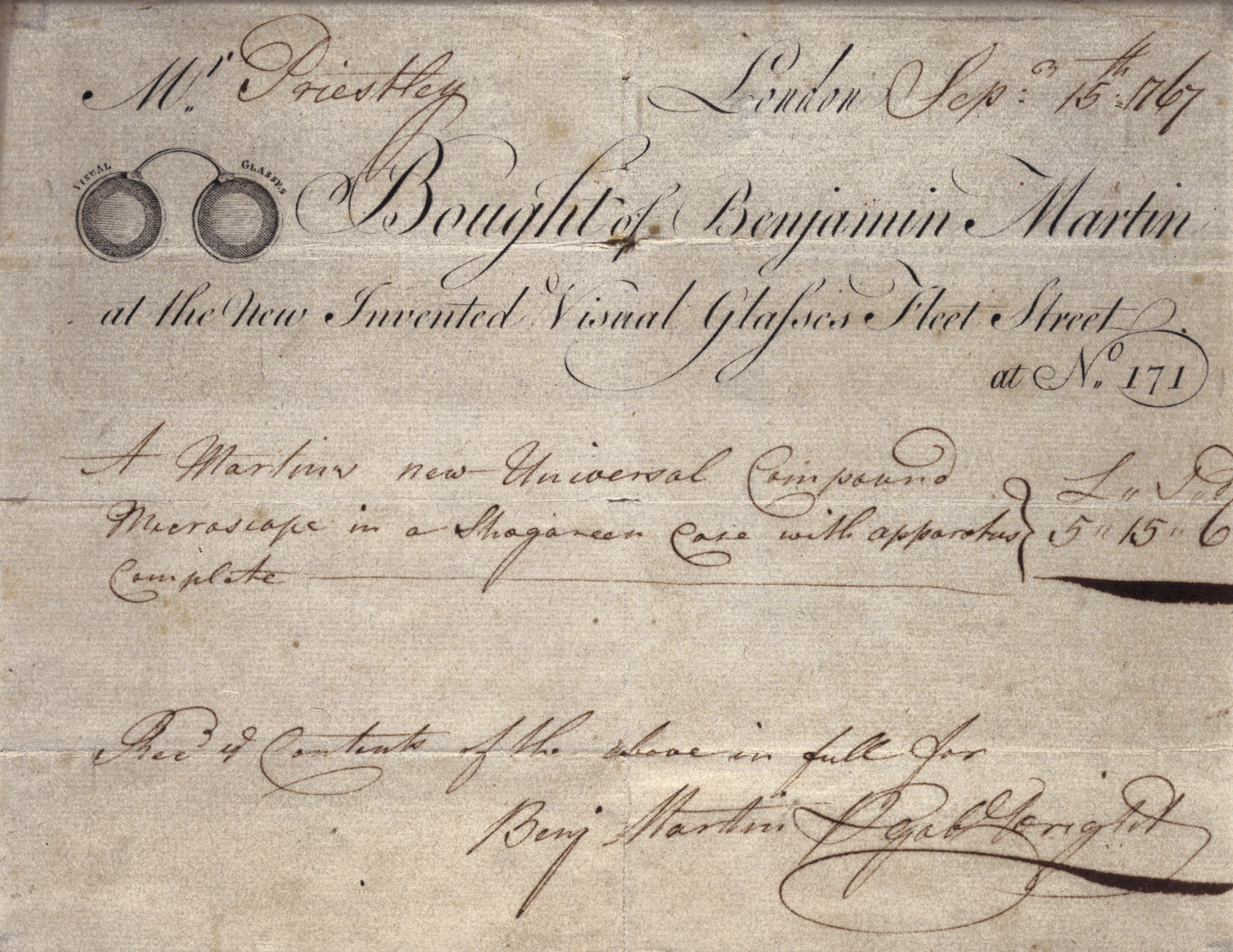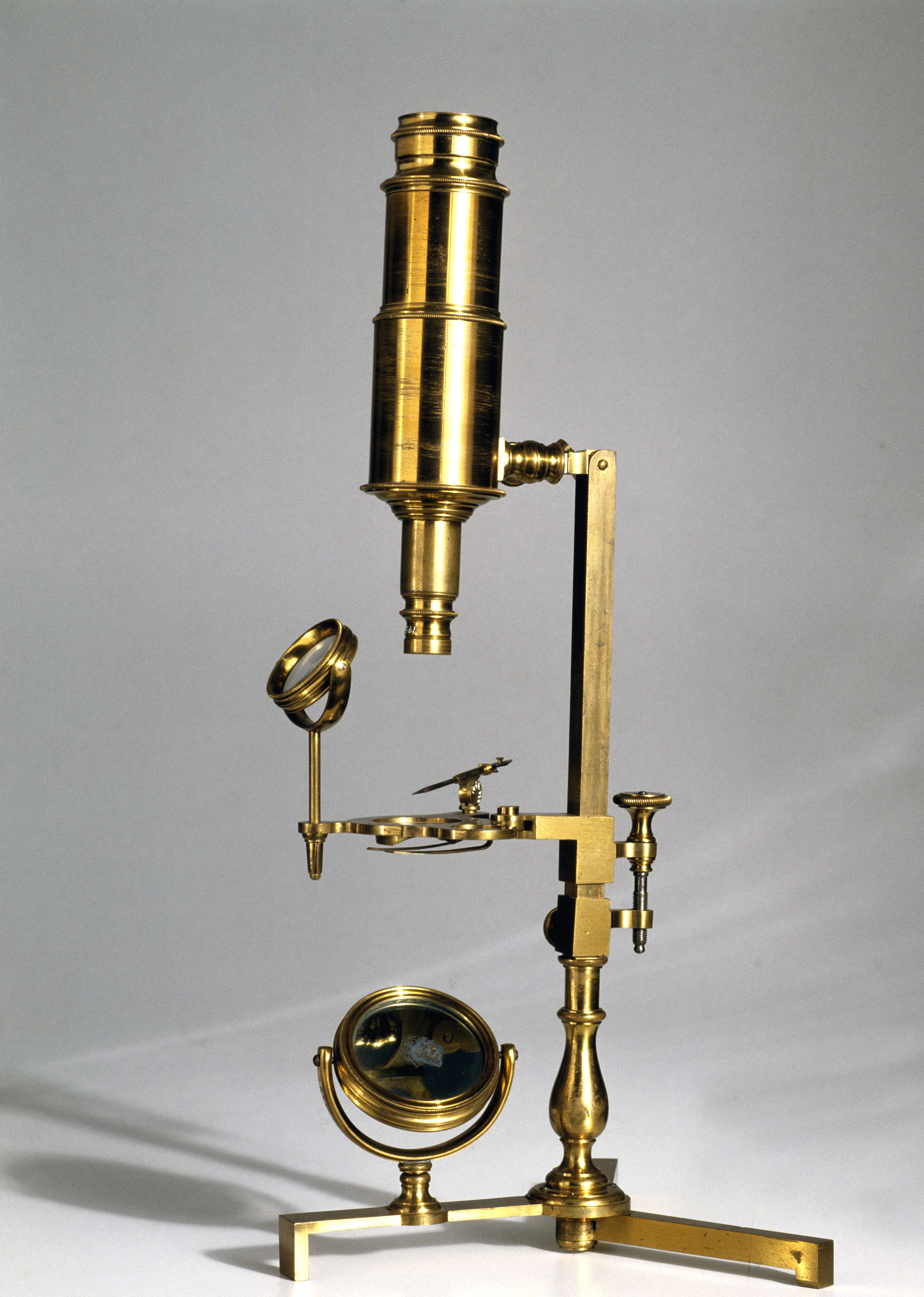Curator of Chemistry Sophie Waring and Assistant Curator Rupert Cole explore the story behind the purchase of Joseph Priestley’s microscope, part of the Science Museum collection since 1954.
On this day (15 September) in 1767 the famed theologian and natural philosopher Joseph Priestley walked into 171 Fleet Street – the shop of London’s renowned scientific instrument-maker Benjamin Martin – to buy a microscope.
The Science Museum has in its collections the very same microscope. But, much more remarkably, the Museum also has Priestley’s original shop receipt.

Such ephemera rarely survives the course of history. To have evidence of a transaction between a notable instrument maker and such a famous figure in the history of science makes this example very special.
Priestley, along with Carl Wilhelm Scheele and Antoine Lavoisier, has a claim to the discovery of oxygen after isolating it in a gaseous state in 1774.
While we don’t know exactly what research Priestley carried out with the Martin microscope, there is record in his correspondence of why he decided to buy it.
In April 1767 Priestley was getting ready to leave Warrington Academy, where he was tutor of modern languages and rhetoric. Seeking advice from a fellow natural philosopher John Canton, Priestley wrote:
“At Warrington, I have the use of a pretty good apparatus; but I am about to remove to Leeds [to take up the ministry at Mill Hill chapel], and therefore shall have occasion to purchase several for myself, to complete my own set of instruments. … I want chiefly a good microscope … the plainer and cheaper the better.”
The original letter is held in the Royal Society Archives.
Benjamin Martin was the man for the job. Martin had established a well-known trade of affordable instruments in London. As well as being a shrewd marketeer, strategically locating his shop close to the prestigious Royal Society, Martin was also a lecturer and lexicographer – the author of one of the early English dictionaries.
The brass compound microscope Martin sold Priestley was based on his ‘universal design’ of 1759, a cheaper version of one designed by the more-upmarket maker George Adam, instrument maker to the King. The microscope comes complete with its original red-lined wooden case and accessories, amounting to a whopping 33 items in total.

Priestley’s receipt tells us lots of useful information that would have otherwise been lost. It was made out by Gabriel Wright, an assistant who worked for Martin for eighteen years. We can also see that the microscope cost £5, 15s. 6d.
In the top left of the receipt is an illustration of Martin’s trademark spectacles, one of his most successful products, which became the name and symbol of his shop sign. Also on the receipt is Martin’s shop number, ‘No. 171’, a unique feature among the surviving shop bills. In 1766 Fleet Street was allocated building numbers.
It is a bit of a wonder that both the microscope and receipt have survived. In 1791, almost 25 years after Priestley purchased this microscope, a riot destroyed his lab in Birmingham where he was a minister and member of Lunar Society. The rioters were targeting religious Dissenters.
It is highly unlikely that this instrument would have been undamaged or stolen, so it seems Priestley must have lent or sold the instrument by then. It came to the Science Museum in 1954 from the National Maritime Museum. Alas we have yet to get to the bottom of its journey before then. The historic record is only so generous!